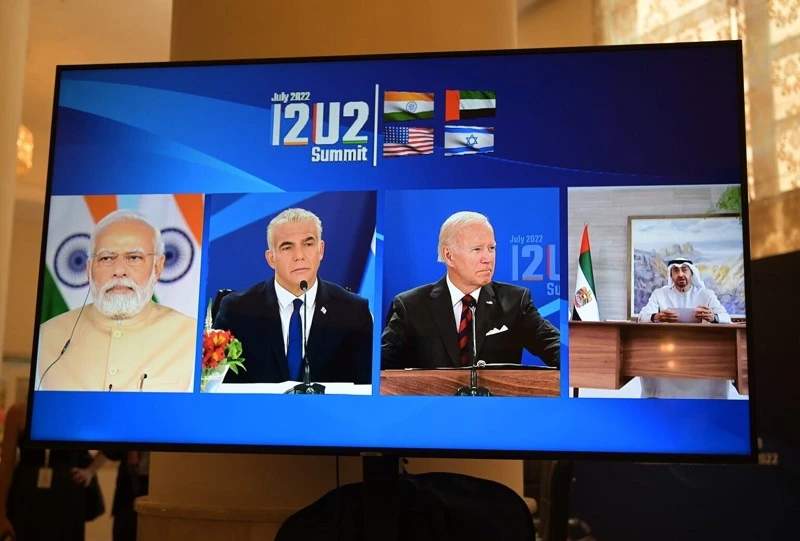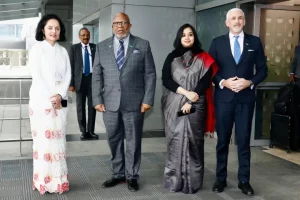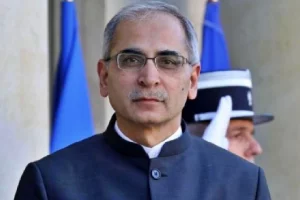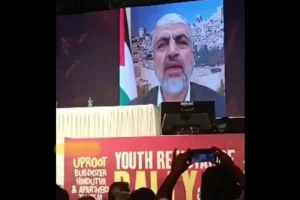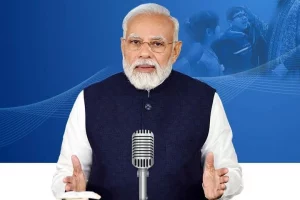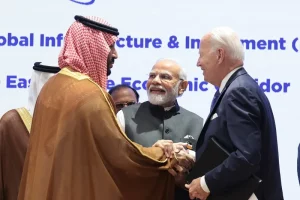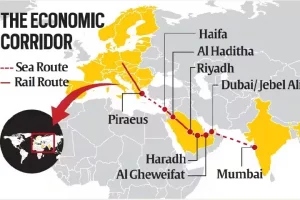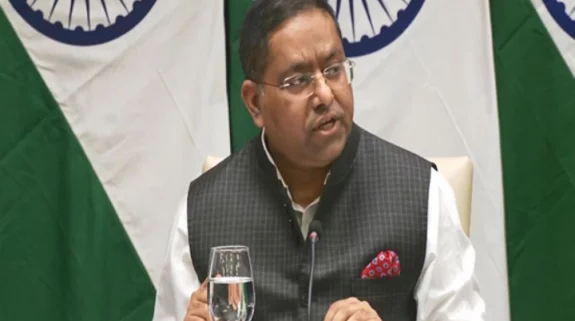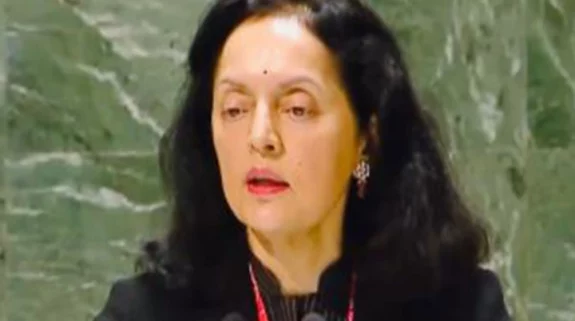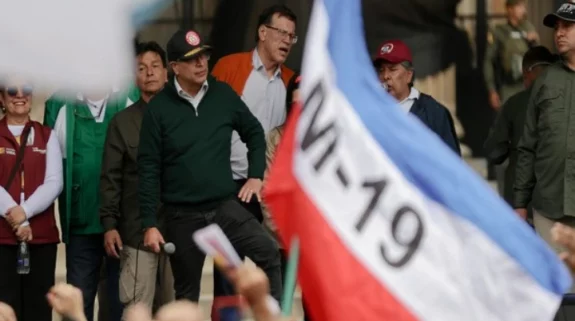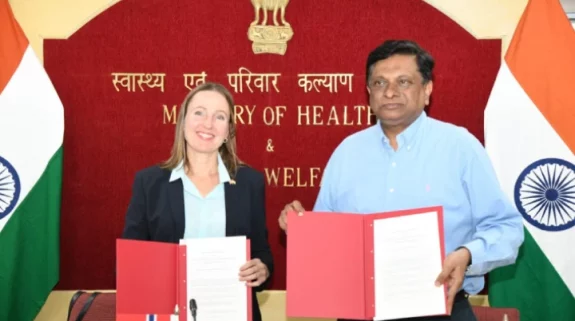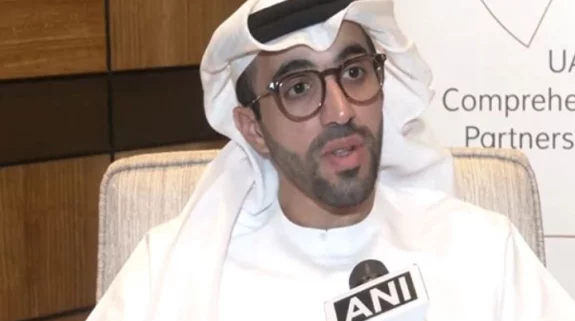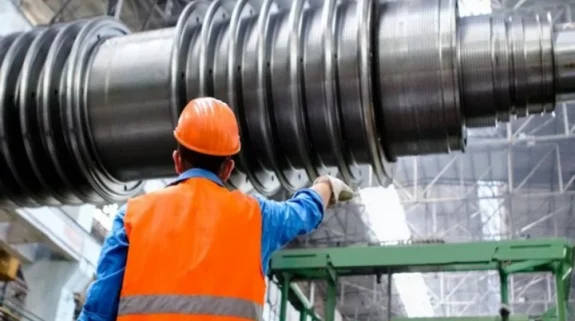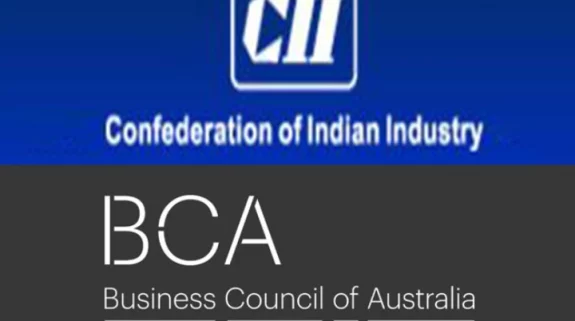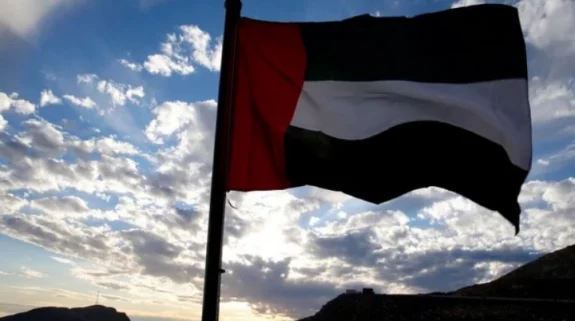With the launch of the I2U2 Private Enterprise Partnership in New York Thursday, the quadrilateral international forum has rolled out a red carpet to private and public entities from India, Israel, the United Arab Emirates, and the United States that will further the goals of the initiative.
The signing ceremony held during the I2U2 meeting on the margins of the United Nations General Assembly high-level week in New York City included India’s Ministry of External Affairs Secretary Dammu Ravi, US Under Secretary of State for Economic Growth, Energy, and the Environment Jose Fernandez, Israel’s Ministry of Foreign Affairs Director-General Ronen Levi, and UAE Ministry of Foreign Affairs Minister Ahmed Ali Al Sayegh.
The Private Enterprise Partnership between the US Department of State and the US-UAE Business Council, the UAE-Israel Business Council, and the UAE-India Business Council, aims at bringing businesses from member countries together to work on billions of dollars in new projects, including on water, space, and clean energy.
It also focuses on driving tangible economic cooperation between its members across a range of other sectors, including food security, transportation, health, and technology.
The official website for the unique grouping has also gone live and now welcoming submissions of new projects.
New #I2U2 website launched! Private sector and other stakeholders can submit projects, that will bring our four countries together 🇺🇸🇮🇳🇮🇱🇦🇪 to be at the forefront of addressing challenges confronting our world.
🌐 https://t.co/tfQv6VD1jA pic.twitter.com/VBJqzpuguj
— Under Secretary Jose W. Fernandez (@State_E) September 21, 2023
Insisting that the I2U2 partnership projects and initiatives are not limited in geographic scope, the grouping has made it clear that it is interested in submissions anywhere they can make a “positive impact”.
The four countries will also continue to foster innovation and support opportunities that make a positive impact, promote regional integration, and advance economic rejuvenation to address key challenges in focus areas.
Last year, Prime Minister Narendra Modi, UAE President Sheikh Mohamed bin Zayed Al Nahyan, US President Joe Biden and the then Israeli PM Yair Lapid announced not only an investment of $2 billion to develop a series of integrated food parks across India but also the setting up of a $330 million hybrid renewable energy project in Gujarat during the inaugural meeting of the grouping.
Calling it a meeting of “strategic partners in the true sense” who are “good friends too”, PM Modi said that all four countries have a common perspective and common interests as well.
He mentioned that the I2U2, which has a “progressive and practical” vision and agenda, has identified joint investment in six key areas of water, energy, transport, space, health and food security.
“By mobilizing the mutual strengths of our countries – Capital, Expertise and Markets – we can accelerate our agenda, and contribute significantly to the global economy. Our cooperative framework is also a good model for practical cooperation in the face of increasing global uncertainties,” said PM Modi in his opening address.
That India, one of the fastest growing major economies in the world, will be at the centre of the long-term strategic partnership – described as the West Asia Quad by many – was evident from the two major initiatives announced by the I2U2 leaders in July 2022.
The first, reported by IndiaNarrative.com extensively, was that of the UAE investing $2 billion to develop agricultural parks in India to ensure longer-term, more diversified food production and food delivery systems that can better manage global food shocks. The parks will incorporate state-of-the-art climate-smart technologies to reduce food waste and spoilage, conserve fresh water, and employ renewable energy sources.
The second initiative announced by the four leaders was that of a hybrid renewable energy project consisting of 300 MW of wind and solar capacity complemented by a battery energy storage system being established in Gujarat.
At the same time, the I2U2 members along with other like-minded partners, are also working extensively to drive existing trade and manufacturing and strengthening food security and supply chains throughout the region.
Earlier this month, ushering in a new era of connectivity from Europe to Asia that will facilitate global trade, cooperation on energy and digital connectivity, India and the United States – along with partners Saudi Arabia, the United Arab Emirates, France, Germany, Italy and the European Union – also announced the setting up of a landmark India-Middle East-Europe Economic Corridor on the sidelines of the G20 Leaders’ Summit in New Delhi.
The colossal strategic infrastructure project that is seen by many analysts as a rival to China’s controversial Belt and Road Initiative – also billed as the new Silk Road – was launched by Prime Minister Narendra Modi, US President Joe Biden Saudi Arabian Crown Prince Mohammed bin Salman Al Saud and European Commission President Ursula von der Leyen at the G20 Leaders’ event on the Partnership for Global Infrastructure and Investment (PGII) in the Indian capital.
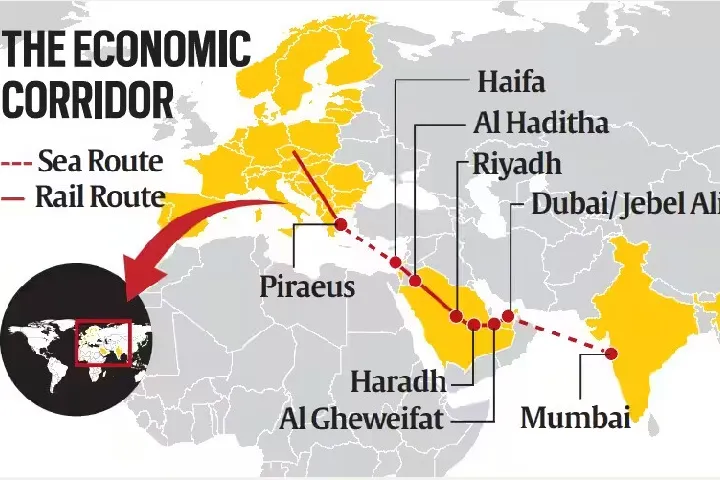
“Charting a journey of shared aspirations and dreams, the India-Middle East-Europe Economic Corridor promises to be a beacon of cooperation, innovation, and shared progress. As history unfolds, may this corridor be a testament to human endeavour and unity across continents,” tweeted PM Modi.
According to the Memorandum of Understanding (MoU) signed between the partners, the massive project will comprise of two separate corridors – the east one connecting India to the Arabian Gulf and the northern corridor connecting the Arabian Gulf to Europe.
It will include railway connectivity – linked through ports connecting Europe, the Middle East, and Asia – that, upon completion, will provide a reliable and cost-effective cross-border ship-to-rail transit network to supplement existing maritime and road transport routes.
Once completed, it will eventually enable goods and services to transit to, from, and between India, the UAE, Saudi Arabia, Jordan, Israel, and Europe.
Also Read: Landmark India-Middle East-Europe Economic Corridor could be New Delhi’s answer to China’s BRI






